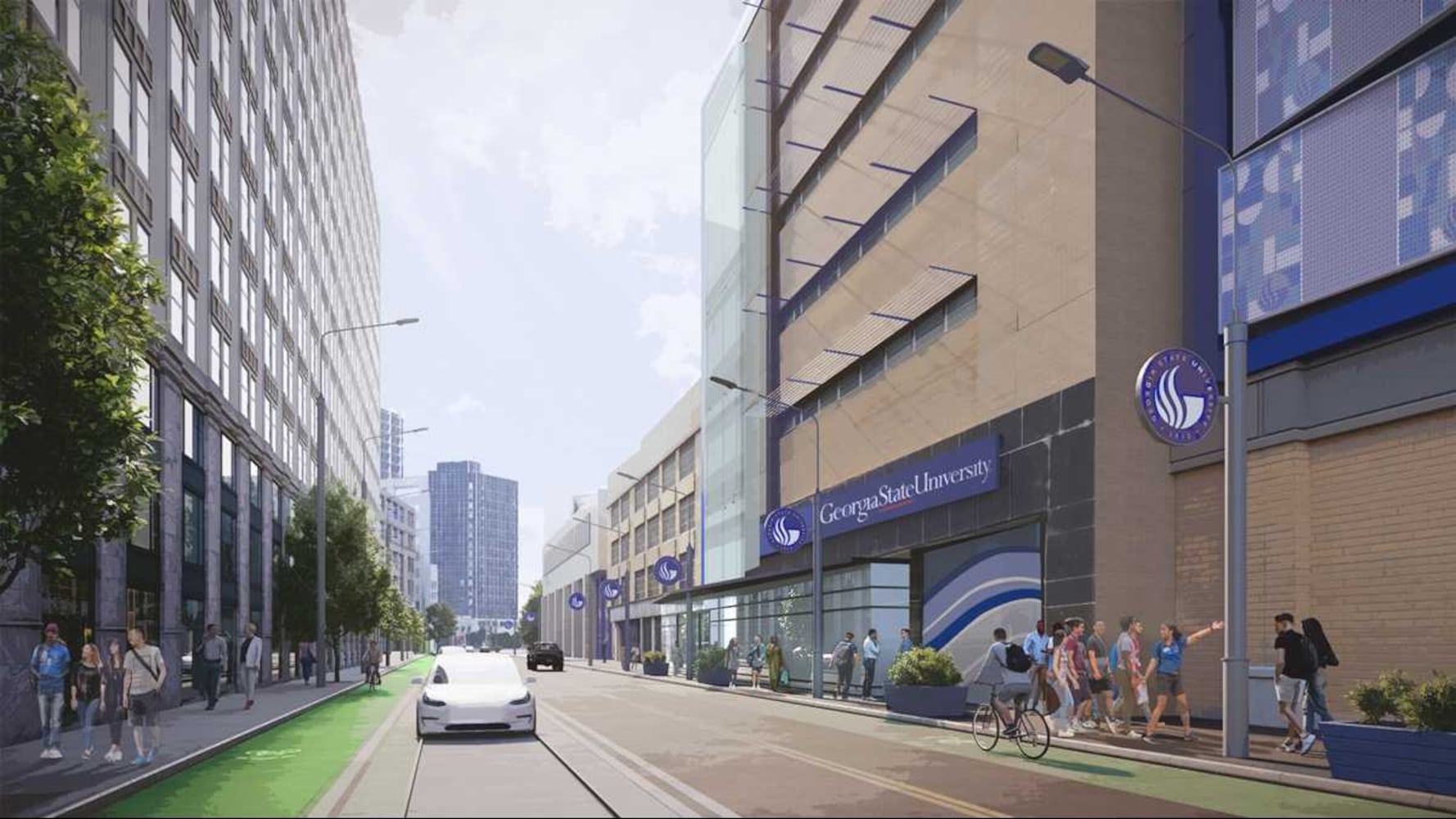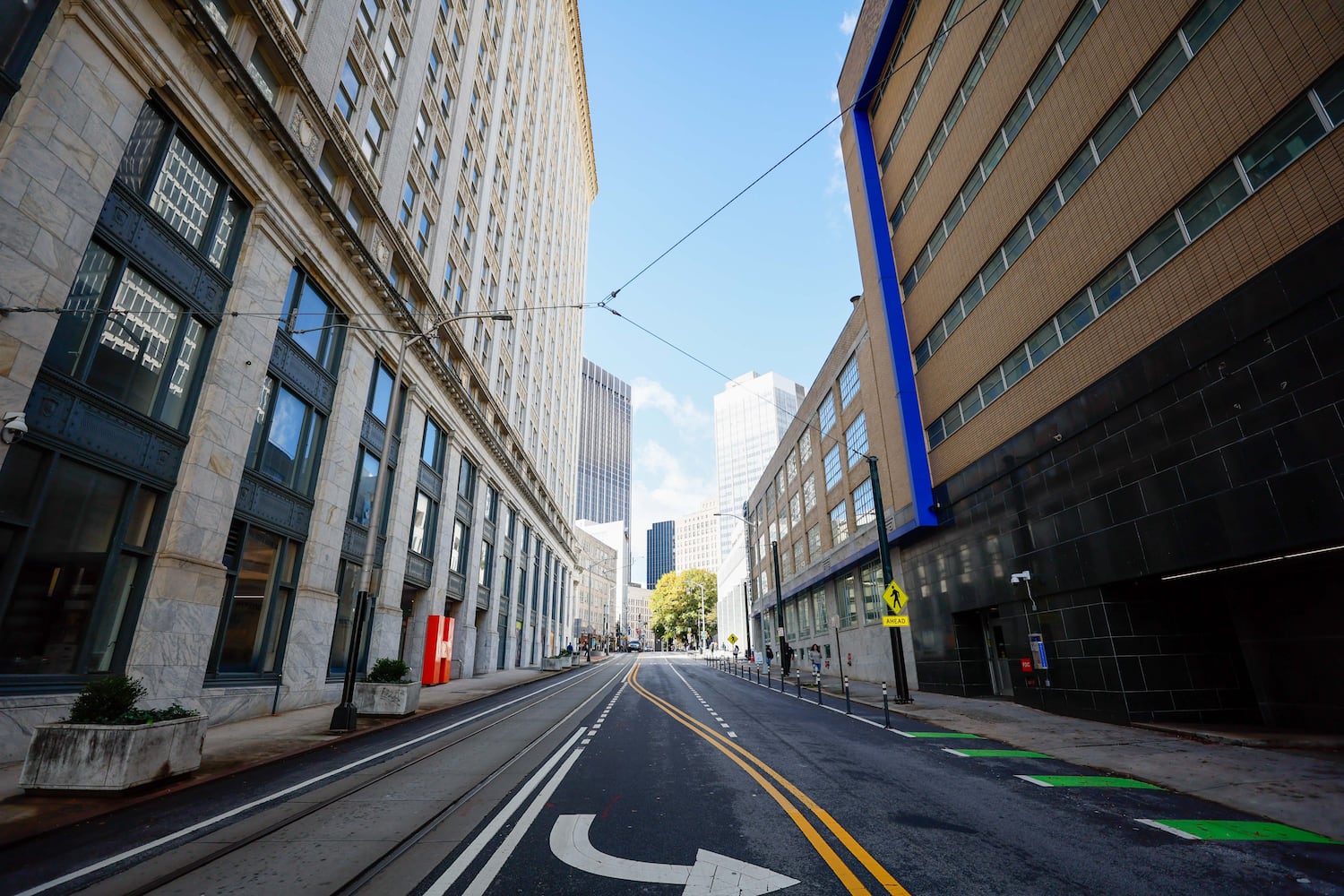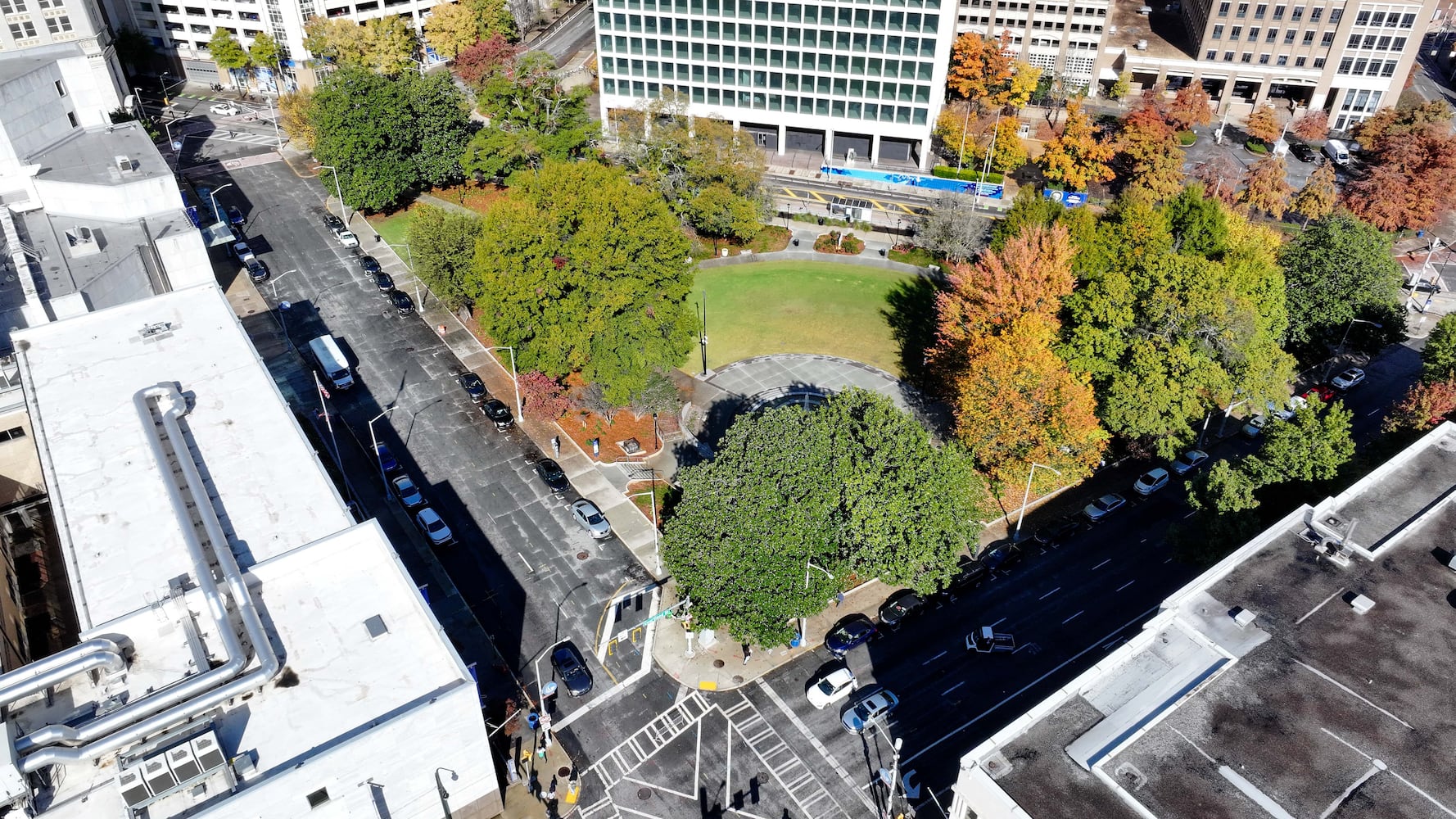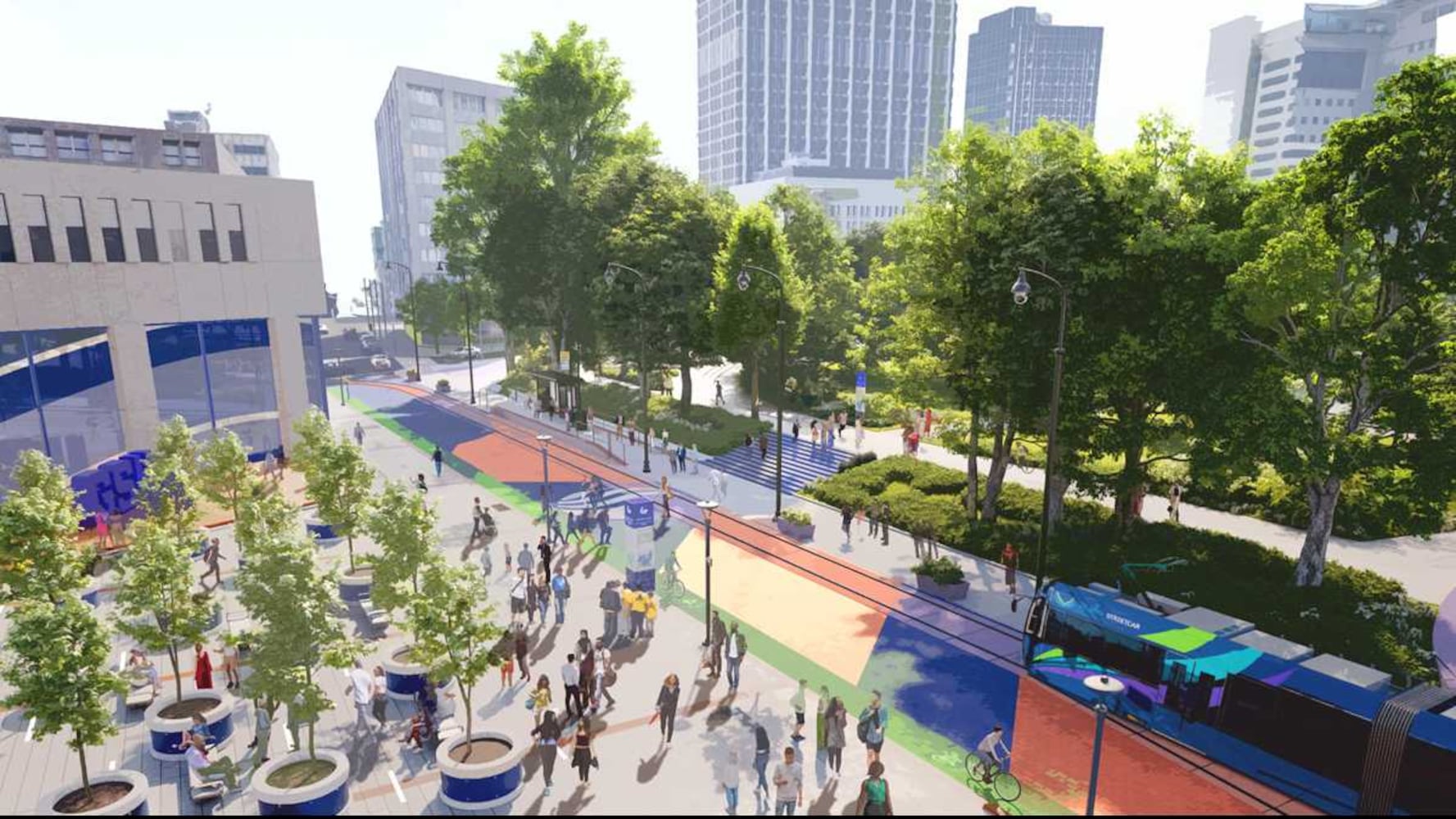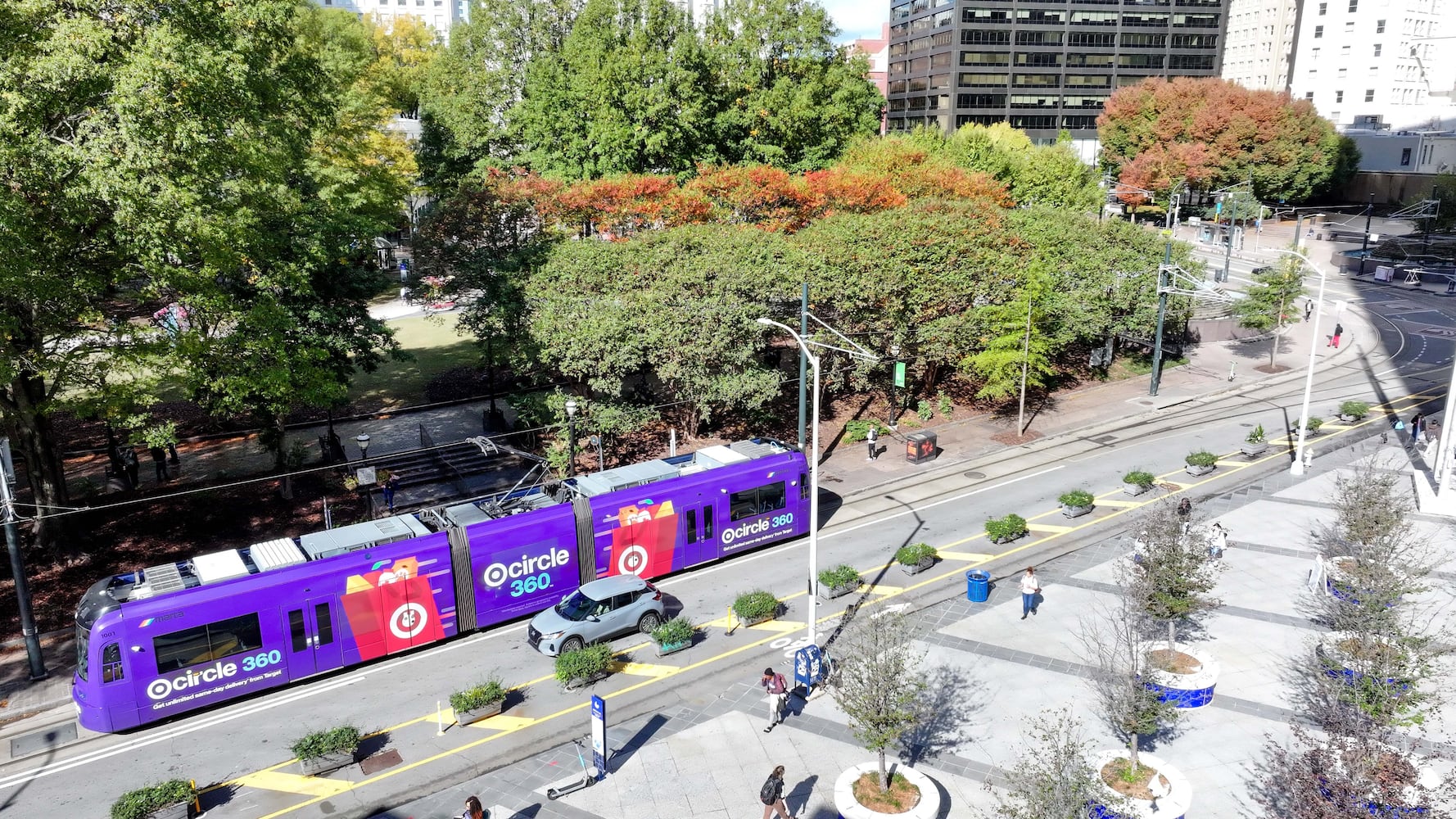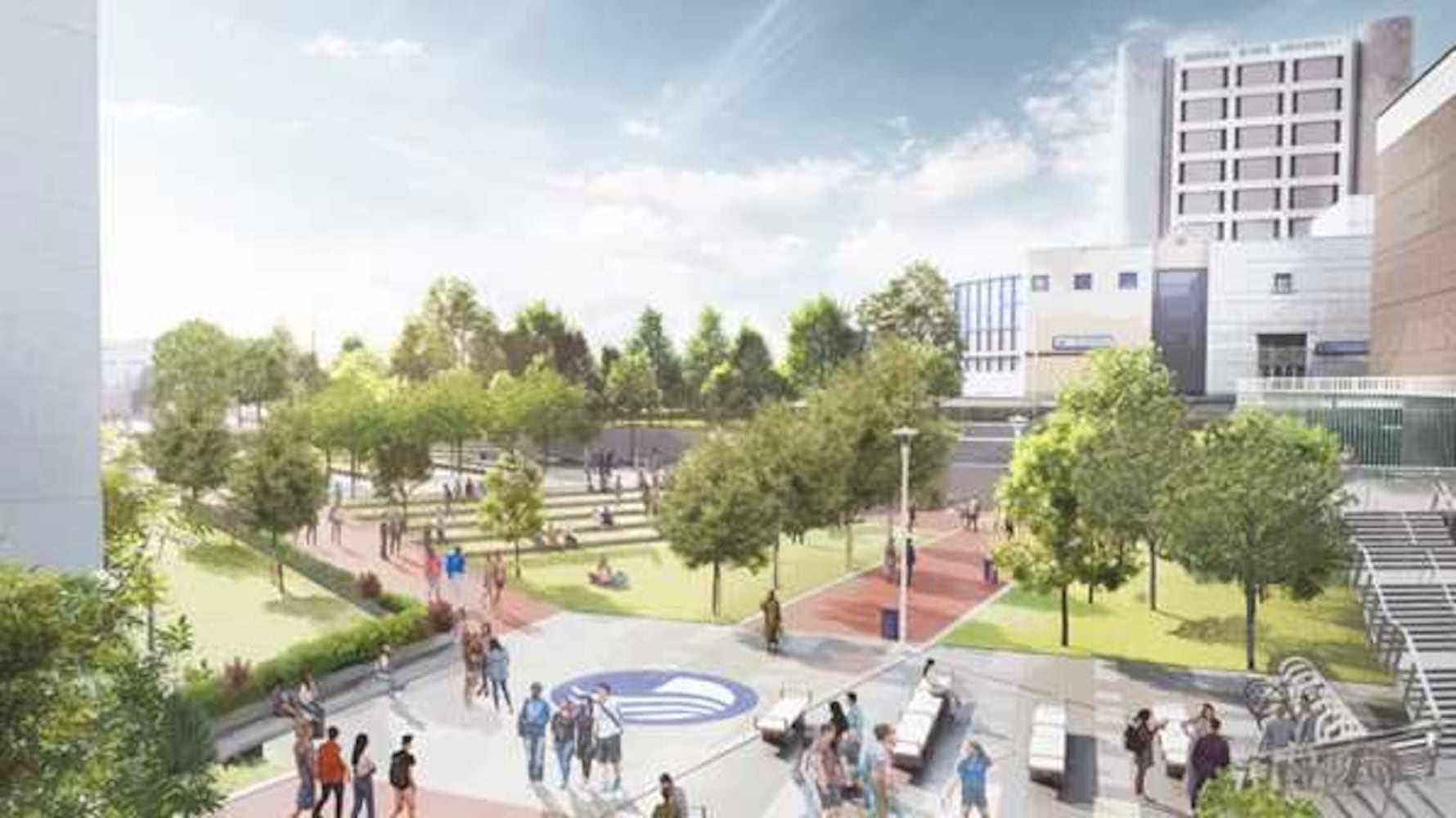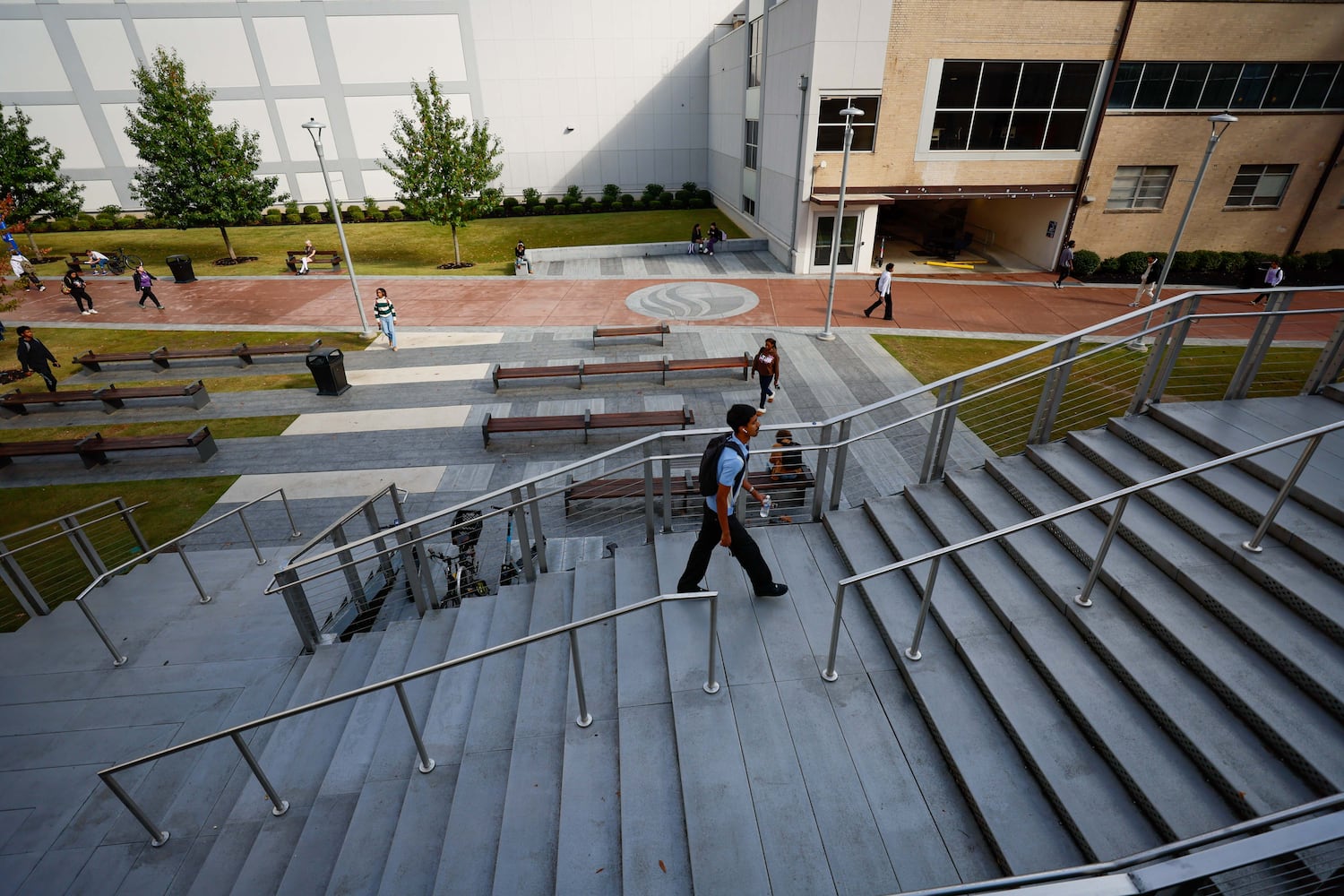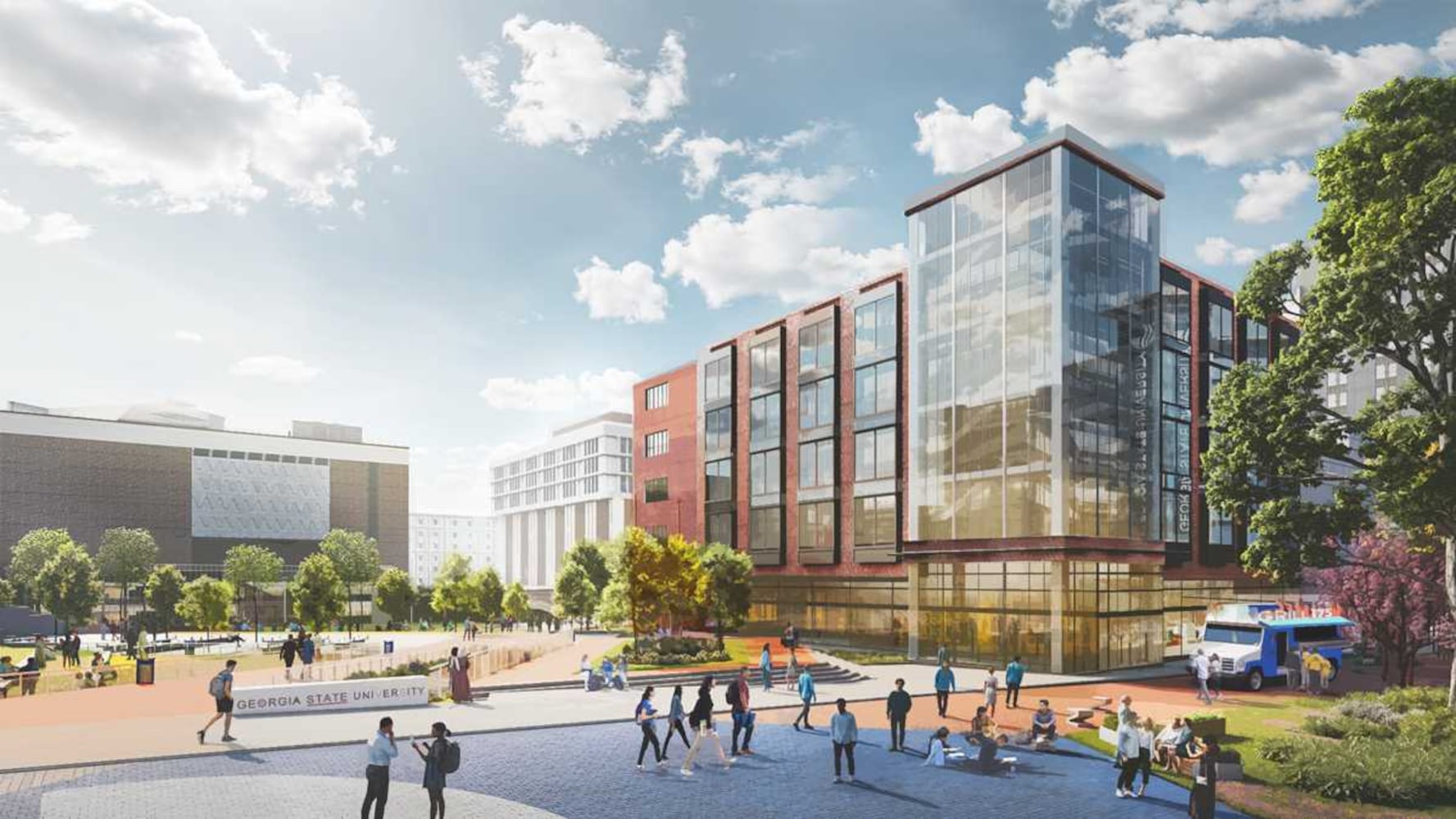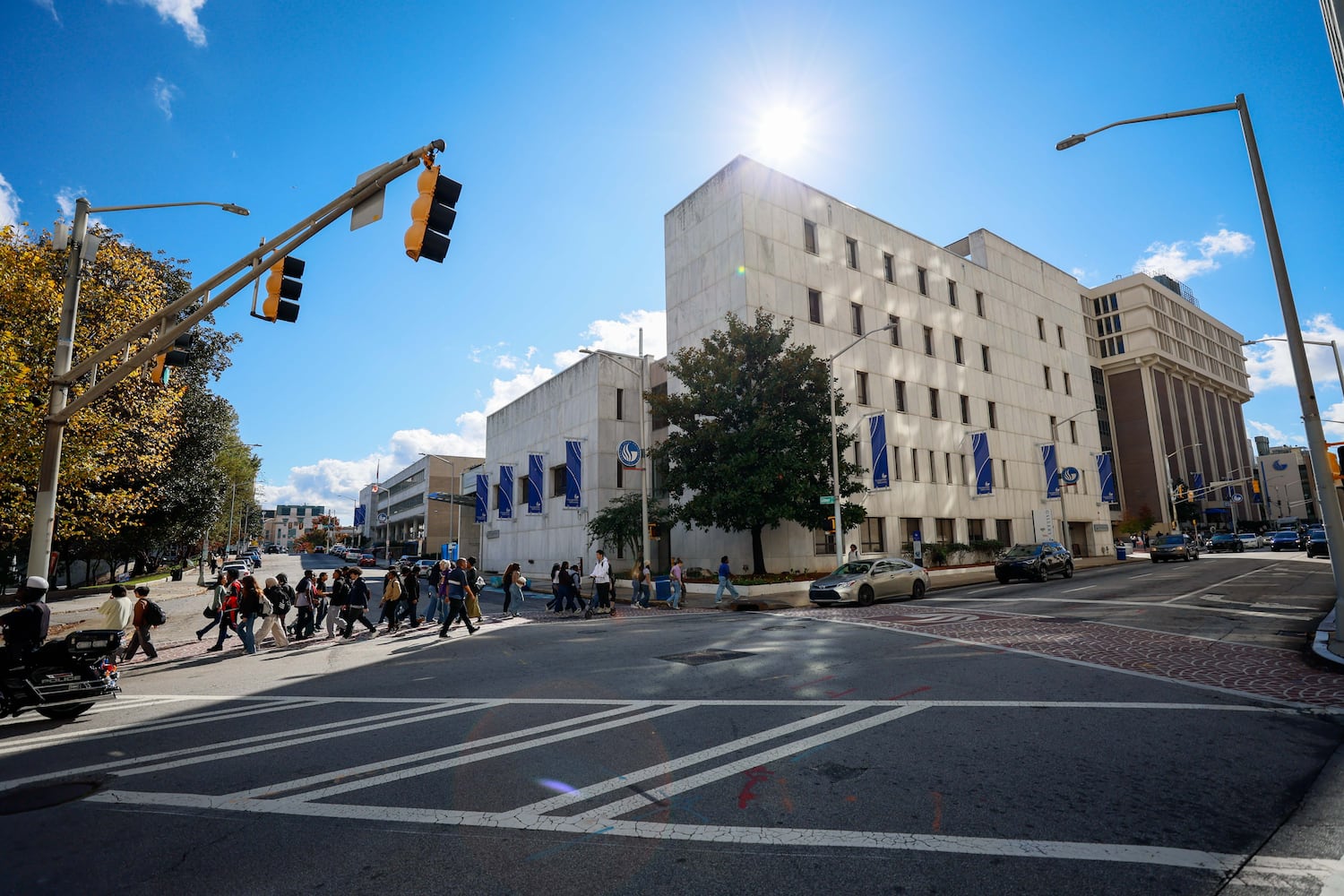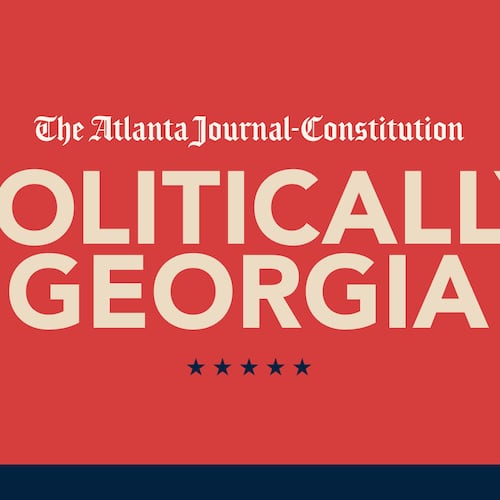It was Georgia State University’s homecoming weekend and its downtown Atlanta campus was awash in blue signs and posters hyping up the big football game.
The weather was sunny and mild, perfect for a pep rally or a party on a large campus lawn. But having such an event can be a challenge at Georgia State, which for years has been a commuter campus.
More than two-thirds of Georgia State’s 52,000 students are enrolled in its downtown Atlanta campus, yet many of them say it doesn’t feel like a traditional college environment. There’s no large green space for students to gather or relax. Tall office buildings abound its streets. The student center — separated by I-20 and the Georgia state Capitol — is about a 30-minute walk from the football stadium.
University leaders want to change the vibe. The Georgia Board of Regents this month approved a $107 million plan to transform some spaces Georgia State officials believe will bring more energy to the area for events like homecoming. They also hope it will help the university recruit and retain more students.
Credit: Seeger Gray / AJC
Credit: Seeger Gray / AJC
“A true college town, downtown,” M. Brian Blake, the university’s president, says in a promotional video — narrated by former United Nations ambassador and Atlanta Mayor Andrew Young — about the plans.
The plan consists of expanding and renovating several buildings, adding green space, pathways and some improvements to Woodruff Park.
University leaders plan to complete most of the work by 2026 in time for the World Cup, which is expected to be one of the biggest sporting events in the city’s history. Some projects, they said, should be ready by 2028. The Woodruff Foundation is contributing $80 million for the campaign, the largest grant in university history. The rest of the money for the plan will come from the university. Some of the work will require cooperation from the city of Atlanta, MARTA and Central Atlanta Progress.
“I think this is a great step for us,” Blake, who became Georgia State’s president in 2021, said in an interview.
Making it feel safe
Before a college campus can be fun, it has to feel safe. That’s been a problem for Georgia State. Several shootings near the downtown campus in recent years raised questions about safety, particularly among some parents of prospective students. The university conducted an analysis of its campus and started making changes. In late 2023, university leaders replaced several hundred lights, added more cameras and emergency call boxes. Several buildings now require a card for access between 8 p.m. and 7:30 a.m.
Perhaps the most important development to improve safety occurred in late February when RaceTrac closed its gas station that was across the street from several campus buildings, including a student housing complex. The gas station had been the setting of several shootings and other violence.
Credit: John Spink
Credit: John Spink
Georgia State invested $11 million this year into several safety upgrades. The most noticeable change is the Blue Line, a 3.7-mile walking path that crisscrosses the downtown campus. About 90 trail markers along the line include QR codes that students can scan with their smartphones to find an online map or call for help. The first-floor windows of buildings that line that route have been dressed up with vinyl graphics that resemble blue waves to call more attention to the pathway.
The university has additional plans to build out the Blue Line in the coming year with branded crosswalks, accent lighting and more artwork. Some of the artwork has already been completed, such as a mural honoring longtime Georgia State University professor Asa G. Hilliard III across the street from Hurt Park.
Credit: Georgia State University
Credit: Georgia State University
You’ve got to have parks
University officials envision the area around Hurt Park, near the student center, becoming a place where students congregate. Georgia State wants to create an enlarged “Panther Quad,” closing off a section of Gilmer Street to vehicle traffic to create a zone of green space, food trucks, cafés and study and relaxation areas. Sparks Hall would be removed to help create the greenway. The quad will become the “social heart” of the campus. The model for the plan is a green space that was created after the 2019 razing of Kell Hall, a near century-old parking deck turned academic building that many on campus described as an eyesore.
“Our students just created a community there and it really feels like a college campus,” said Jared Abramson, the university’s executive vice president and chief operating officer.
Credit: Contributed
Credit: Contributed
Credit: Miguel Martinez-Jimenez
Credit: Miguel Martinez-Jimenez
Georgia State also has plans for Woodruff Park which include a new path and moving the Atlanta Streetcar stop. Park Place between Auburn and Edgewood avenues would be closed to vehicle traffic and only open to the streetcar. Making it a more popular space for Georgia State students, though, could create challenges with people in the area who are unhoused. Blake said conversations will be necessary with city officials, civic leaders and business owners to bring Woodruff and Hurt parks “to the predictable experiences that we would like.”
Convincing students
The plans focus on spaces north of I-20. In recent years, Georgia State has expanded its footprint south of the interstate into neighborhoods like Summerhill with new residential housing near the football stadium and its shiny convocation center, which opened in September 2022, and hosted campaign rallies this election season for Vice President Kamala Harris and President-elect Donald Trump. Blue and white Georgia State buses move like clockwork throughout the day between the area and its downtown campus.
“At Georgia State, we know transformation,” Young says as the football stadium, which was once home of the Atlanta Braves, is shown in the promotional video about the “Pathways to Success” plan.
The plan is the university’s latest attempt at transformation. Some students interviewed said Georgia State’s efforts are ambitious, but think the work may be somewhat limited due to the workday congestion of downtown Atlanta and the lack of green space.
Indya Coleman, 21, a senior biology major, thinks the goal of more green space is good. More importantly, says Coleman, who lives on campus, is that Georgia State controls who has access to campus buildings to prevent activity that endangers students.
Arnav Pareek, 19, a freshman, saw the plans on LinkedIn and supports what Georgia State is attempting to accomplish.
“It’s a pretty defined space, so they’ve done a good job,” Pareek said.
Credit: Conri
Credit: Conri
Credit: Miguel Martinez-Jimenez
Credit: Miguel Martinez-Jimenez
Pareek, though, said he’s considering plans to transfer to Georgia Tech in the next academic year in part because he said the Midtown Atlanta school, which has a campus green and a park, feels more like a traditional college campus.
Blake believes bringing more dining options to some of the campus buildings they plan to improve will help convince students that Georgia State is a “college town.” He’s confident students will become excited about the plans as more projects are completed.
“I think to really get that college town, town and gown feel, we have to do our part to be smart about (how) we bring this together,” he said.
Here are some of the projects Georgia State University is planning to improve its downtown Atlanta campus:
2026
- Streetscape and other renovations to 25 Park Place Plaza.
- Facade and other improvements to 58 Edgewood Ave.
- 100 Edgewood infrastructure/frontage/terrace improvements.
- Gilmer Street pedestrian streetscape.
- Sparks Hall demolition and greenway expansion.
2028
- 100 Edgewood classroom renovations.
- An addition to the Arts & Humanities building.
- Peachtree Center parking deck improvements and retail additions. (That project is not included in the $107 million budget.)
Credit: Contributed
Credit: Contributed
Credit: Miguel Martinez-Jimenez
Credit: Miguel Martinez-Jimenez
About the Author
Keep Reading
The Latest
Featured
